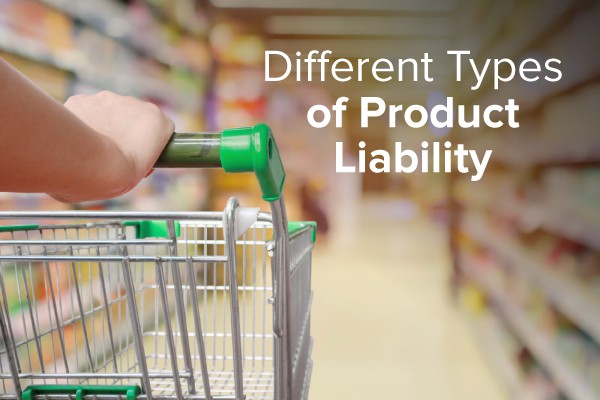
Innovations are changing the way we interact with the world around us. Smartphones, advanced cars, household appliance upgrades, and a new generation of gaming systems have taken the world by storm. With such high demand for the latest design or next big thing, sometimes companies rush products through the safety testing phase, leading to defects. Consumers injured by defective products may lose trust in the product and end up dealing with medical expenses and emotional damage. If you have been injured due to a defective product, you may be eligible for compensation. But first, you must identify the kind of defective product case you have.
The dedicated team of product liability attorneys at the Hernandez Law Group, P.C. ensures that our clients have a voice in their cases. We help them get the compensation they deserve by providing unparalleled legal counsel and gathering evidence to prove the liability of the negligent party. When it comes to product liability cases, the following parties may be at fault.
Liability for Design Defects
Design defects describe when a flaw in a product’s design makes it unreasonably dangerous to the user. Design defects typically occur at the beginning of the product’s planning period, meaning the entire set of products will be flawed.
In these cases, the company that designed the product would typically be held liable. However, if during the manufacturing process of the product a foreseeable risk was apparent in the design but ignored, the manufacturer may also be held liable for any damages or injuries the product causes.
What Are Some Common Examples of Design Defects?
Certain industries are more likely than others to produce products with design defects. The following products are the most at risk for developing a design defect:
- Structural products, such as tables or chairs built with uneven legs.
- Toys for children designed with unattached small parts, increasing the risk of choking.
- Cars designed to be too top-heavy, making them unable to turn without tipping over.
- Power tools with improperly designed safety guards.
- Pieces of clothing made from unduly flammable materials.
Liability for Manufacturing Defects

Manufacturing defects occur due to a mistake in the manufacturing process. These defects usually happen in one product in a batch due to human or computer error. Liability for such defects falls in the product’s manufacturer. Often, the mistake is overlooked during inspection and the product goes to market, where it falls into the hands of the plaintiff. In manufacturing defect liability cases, the plaintiff must prove that the injury was not caused by any fault of their own.
For example, if the battery of a plaintiff’s computer burst while they were using it, causing severe burns, they must show the busted battery. They also have to prove that they were not using the computer in dangerous or unintended ways, such as in extremely hot conditions. If it is proven that the plaintiff was misusing the product, they may be held liable rather than the defendant.
Common Examples of Manufacturing Defects
Here are some of the most common examples of manufacturing defects:
- Defective or missing brake pads on brakes
- A chair with a cracked leg
- Incorrectly mixed medicine
- Using the wrong materials when constructing a product, making it weaker than intended
- Incorrectly installing wires or circuitry in electronics
Liability for Defects in Marketing
Finally, we have defects in marketing, also known as label defects. These include product warning labels and instructions. Failure to warn consumers about the possible risks involved in using a product can lead to injury from lack of precaution on the side of the consumer.
Liability, once again, usually falls on the manufacturer of the product for failing to properly warn consumers of the potential risk. The plaintiff has to be able to show that lack of proper warning caused them to use the product without caution, resulting in their injuries. They have to illustrate that since they were unaware of the risk, they were unable to act competently. An example of this would be a medicine failing to warn consumers about the possible negative side effects if mixed with common painkillers.
What Are Examples of Label Defects?
Here are some common examples of failure to provide an adequate warning:
- A travel cup that does not fare well with hot beverages
- Paint that may have harmful fumes when first applied
- Electronics that may cause epileptic seizures due to flashing lights
Establishing Liability in a Product Liability Case
As mentioned earlier, the plaintiff must be able to show that a defect in the product or its labeling/instructions resulted in the injuries they sustained while using it. They must prove the negligence of the manufacturer in the following ways:
- The product was designed as intended.
- The design of the product provided a foreseeable risk of injury when used as intended.
- The cost of remaking the product with a safer design would not have put the company in financial turmoil.
- Safer modifications would have allowed the product to perform in the same manner but without risk.
- The plaintiff was injured while using the product as intended.
Part 1: The Individual Using the Product Was Injured

When an individual uses a product as they should, the risk of injury should be low or non-existent. For example, imagine a small child is playing with an action figure designed for children during recess. But the hat of the figurine can be removed, and the child puts it in their mouth. They swallow and choke. This would be an example of a foreseeable danger while using the product as intended.
Part 2: The Product Was Designed As Intended or There Was a Manufacturing Error
When it comes to product liability, you must prove that the product’s design, labeling, or manufacturing was flawed and that you did not simply misuse it. You must prove that the product itself is unreasonably dangerous.
Just because a product has the potential to cause injuries doesn’t mean it is defective. For example, car airbags can cause serious injuries such as burns. But their low cost to manufacturers and high level of protection they provide drivers and passengers outweighs the potential risk of injury. Therefore, in cases where airbags cause injury, automobile manufacturers can argue that their airbags are not unreasonably dangerous and are essential to the protection of drivers and their passengers.
On the other hand, if an airbag were to randomly deploy without the vehicle being involved in an accident, the manufacturer may be at fault. In this case, the airbag acted outside of its intended use and is defective. Therefore, it would be easier to prove the liability of the manufacturer.
There Was a Failure to Warn About the Potential Hazard
A plaintiff may also show that a defective product caused their injury because there was a failure to warn about the potential hazard. Using the example of the small child playing with the action figure, the parent who bought this toy for their child was unaware the hat could be removed. Additionally, the toy was sold and marketed for children their child’s age. Because the instructions failed to warn about a choking hazard, the parent had no idea of the inherent risk. In this case, the marketing team of the manufacturer or the manufacturer themselves may be held liable for the incident.
Part 3: The Defect Caused The Injury

For a product liability case to be successful, you can’t just show that the product was defective. You must also prove that using the product caused the accident resulting in your injury.
This may be easy in some cases, such as the parent showing in x-rays that the hat caused the child to choke. In other cases, though, this may be more difficult.
For example, multiple variables could cause a car to flip while making a sharp turn. Slick road conditions, speeding, or poor road construction could all lead to an accident like this. In such, an automobile manufacturer may argue that reckless driving led to an accident, not the car’s design. For individuals facing this situation, an expert testimony—such as one from a mechanic—can help prove poor design caused the accident.
Hernandez Insight: You Must Be Using the Product As It Was Intended
It is important to reiterate that you need to have been using the product as intended for your case to hold any standing. Going back to the car example, if you were speeding or making risky decisions while driving, such as suddenly swerving to get around another vehicle, and the car suddenly lost traction and tipped over, liability won’t fall on the manufacturer. This is because you were using the vehicle in a way that was unsafe or not intended for the car.
The same can be said for cars with a naturally higher center of gravity such as SUVs or big trucks.
Don’t Face Your Product Liability Case Alone
Injuries caused by a defective product can be serious. Don’t let one put your life on hold. Contact the personal injury attorneys of the Hernandez Law Group, P.C. to get aid in claiming the compensation you deserve.
Juan Hernandez is one of the two percent of Texas Board Certified lawyers in personal injury law. He’s one of the best, so you can rest assured that your case is in good hands. While you focus on recovering from your injuries, our team will work hard to get you the compensation you deserve. Call the Hernandez Law Group, P.C. today for a consultation.
